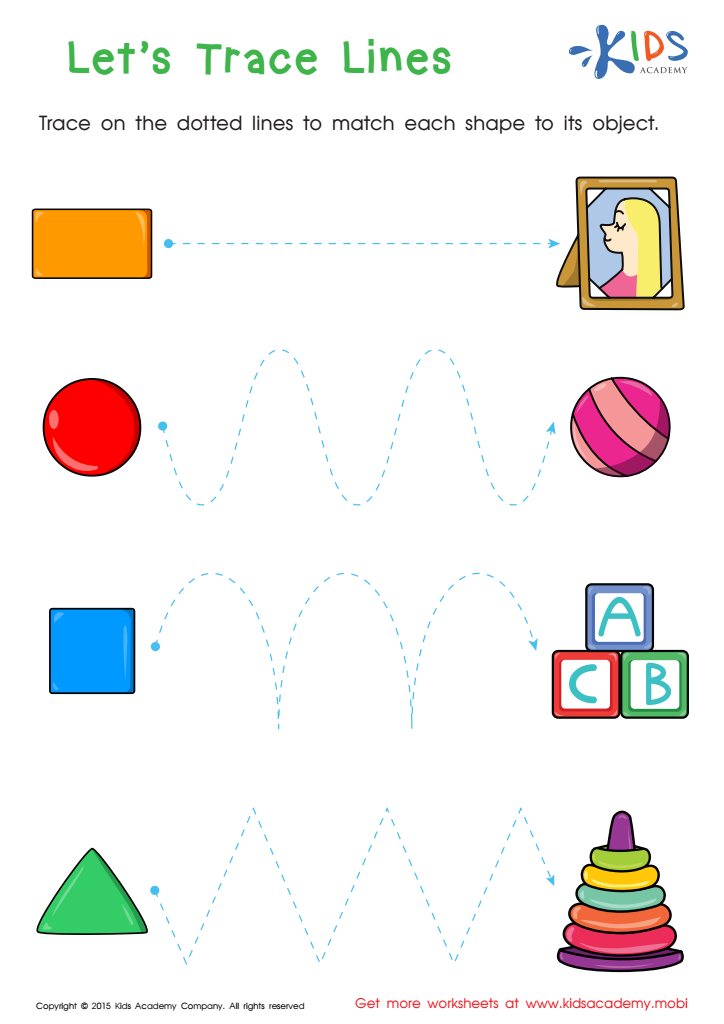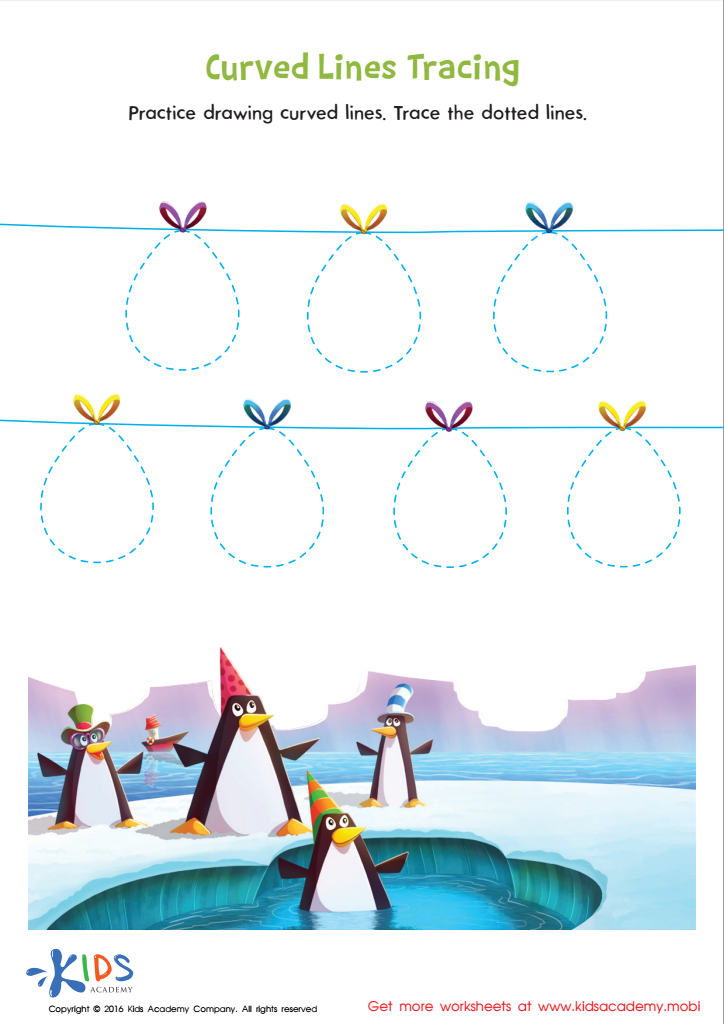Shape Recognition Tracing Lines and Curves Worksheets for Ages 5-6
3 filtered results
-
From - To
Unlock your child's full potential with our Shape Recognition Tracing Lines and Curves Worksheets, specially designed for ages 5-6. These engaging worksheets combine the fun of tracing with essential developmental skills, such as fine motor coordination and shape recognition. Through interactive exercises, children can enhance their ability to identify and draw lines and curves, laying a formidable foundation for future learning. Perfect for early learners, these printables will keep kids entertained while subconsciously teaching them the basics of geometry and writing. Discover an exciting way to make learning both enjoyable and effective today!


Find the Curved Lines! Worksheet


First Words: Let's Trace Lines Worksheet


Curved Lines Tracing Worksheet
Shape recognition and tracing lines and curves are foundational skills that parents and teachers should prioritize for children aged 5-6. This period is critical for cognitive and motor development, and engaging activities that involve shapes and tracing significantly support this growth.
Understanding shapes is fundamental to early math and geometry, helping children grasp more complex concepts as they advance in their education. Recognizing circles, squares, and triangles nurtures spatial awareness and the ability to categorize and compare different objects, which is essential for problem-solving and logical thinking.
Tracing lines and curves, meanwhile, hones fine motor skills, which are crucial for writing. These activities develop hand-eye coordination and dexterity. By practicing structured movements, children become more comfortable with pencil control, laying the groundwork for forming letters and numbers accurately.
Moreover, these activities build patience and focus. Completing tracing tasks requires attention to detail and consistency, which are important attributes for academic success. Engaging in these exercises also fosters a sense of achievement and helps in cultivating a positive attitude towards learning.
Ultimately, by integrating shape recognition and tracing activities into early childhood education, parents and teachers set the stage for a smoother transition into primary education, ensuring that children have the necessary tools to thrive academically and developmentally.
 Assign to My Students
Assign to My Students

















